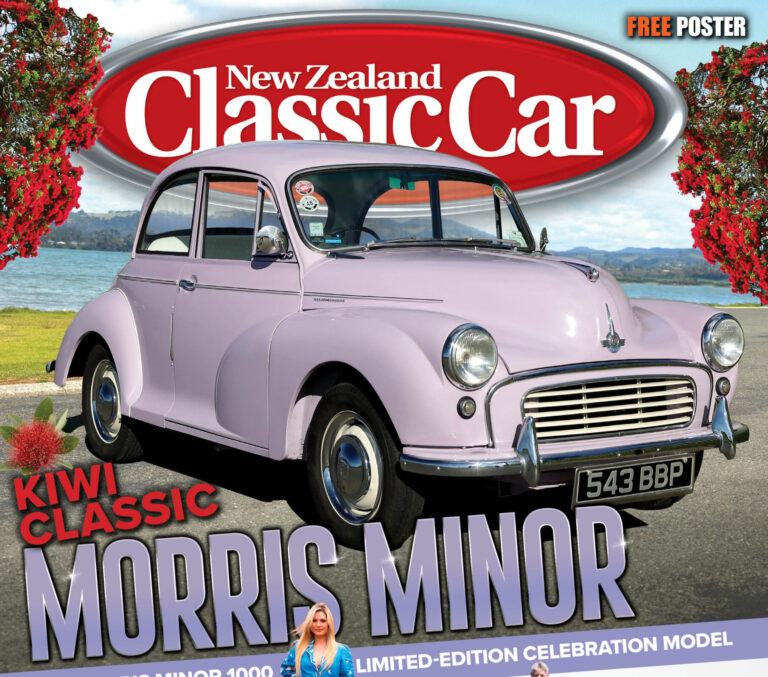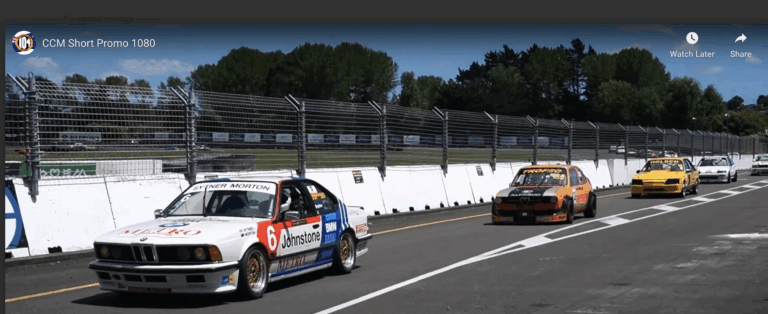data-animation-override>
“Trevor Collins, now resident in New Zealand but once part of the innovative Rover Gas Turbine group, remembers the time 50 years ago when an even more radically powered car made its final appearance at the Sarthe circuit”

Although most will have heard of ‘JET 1’ — the gas turbine–powered version of Rover’s venerable P4 — few are aware that Rover’s involvement with the Whittle jet engine dates all the way back the early ’40s, when Maurice Wilks and his team at Rover first began work on the W2B turbo jet. Although the British Ministry of Aircraft Production–sponsored jet project was taken over by Rolls-Royce in early 1943, Rover persisted with its development of the gas turbine engine, the eventual aim being a series of road cars. Although that idea ultimately proved unsuccessful, under the auspices of the Rover Gas Turbine group (established in 1953), Rover continued to produce engines for many years — the group becoming part of British Leyland in 1967, where Rover-developed gas turbine engines would find a place in trucks and British Rail’s APT-E, an experimental train that ran four Rover-built gas turbines and was first tested in 1972. The high-speed APT-E was able to reach speeds of around 250kph.
Motor-sport fans, however, will probably best remember the Rover-BRM that ran at Le Mans in 1963 and 1965. Although he never got to watch the cars competing at Le Mans, Rover Gas Turbine group member, Trevor Collins — now resident in New Zealand — remembers the sequence of events very well.
Rover and Le Mans

A Rover gas turbine–powered car first appeared at Le Mans in 1962, when the Rover T4 completed a lap of honour prior to that year’s 24-hour race. Several months later, in November 1962, Rover embarked on a new project.
A special prize of 250,000 francs was being offered by the organizers of the Le Mans 24 Hours for any gas turbine–powered car that could complete a minimum of 3600km during the course of the race. As such, the plan was to join up with Rubery Owen, the company that owned BRM, to produce a gas turbine car for the 1963 Le Mans race.
With a chassis derived from the contemporary BRM F1 car, the eventual Rover-BRM came together very quickly. The gas turbine — which would run on paraffin, idle at 28,000rpm and spin up to 55,000rpm at load — was built at Solihull by a team headed up by Noel Penny and including Mark Barnard, Peter Candy, Fred Court and George Perry.
A larger 218-litre (48-gallon) fuel tank was allowed for turbine-equipped cars rather than the 109-litre tanks required for more conventional petrol-powered cars. And, as the Rover-BRM would not officially be a competitor, it was allocated the number ‘00’ for the race.
Subsequent test-bed running of the engine at Solihull simulated 24 hours running at Le Mans, while wind-tunnel testing of the car’s eventual body was conducted at MIRA.
During this time the two drivers contracted to race the Rover-BRM at Le Mans — Graham Hill and Richie Ginther — were given the opportunity to test the T3 and T4 Rover jet cars in order to better understand the unique characteristics of these turbine-powered racers. Reportedly, Hill was none too happy with the Rovers, no doubt preferring to have been racing a Ferrari at Le Mans.
It’s interesting to note that at one MIRA test session the Rover-BRM reached a top speed of 237kph (147mph), and lapped at a similar time to the lightweight E-Type that was being tested on the same day by famed Jaguar test-driver Norman Dewis.
Le Mans 1963

Peter Candy kept a record of those days in late March and early April 1963, in the lead up to Le Mans.
- March 31: Engine first run in the car at Motor Panels Ltd.
- April 1: Car run on the Solihill test track – engine ran roughly as the diffuser bolts has sheared. Engine changed and we ran on the track late that night.
- April 2: Car taken to MIRA, driven by myself, Mark Barnard, Hill and Ginther.
- April 3: Car left Solihull late in the day for France.
- April 5: Team established in a very old, tatty, dirty and small garage in Le Mans town – ‘pee corner’ was a small urinal in the corner of the workshop.
- April 6: Practice in the rain. Rain came in everywhere – Ginther complained and temporary solutions we resorted to. A special seat had to be built for Ginther so he could reach the pedals, this being taken out when Hill did his stint in the car. Following the practice sessions at Le Mans, the Rover-BRM was returned to Solihull, and subsequently recorded a top speed of 209kph (130mph) during testing at RAF Evington. For Le Mans proper, the team travelled to France by car — an old Land Rover plus a trailer being pressed into service to transport the race car. Writing from the team’s base at Le Lude, around 16km from Le Mans, Peter Candy recorded a few thoughts.
- June 13: Thursday was scrutineering and final practice running, all awash with rain. Hill did not think much of us bunch of amateurs with this “tiddly little car.” BRM mechanics were excellent and helpful with our poor knowledge of racing and car preparation for this sort of thing. The 1963 Rover-BRM team was lead by Wilkie Wilkinson from BRM, and he was joined by Barnard, Candy and, in the pits, Fred Court and George Perry. In the event, the Rover-BRM’s gas turbine reached 38–40,000rpm along the Mulsanne Straight for a road speed of around 225–240kph. The car completed 4165km (2588 miles) during the 24-hour race at an average speed of 173.4kph/107.8mph, with Ginther setting the fastest lap at 182.8km/113.6mph. The car consumed 1693 litres (372.50 gallons) of paraffin, making average fuel consumption a mere 6.9mpg — or 40.9l/100km. Although unclassified, the Rover-BRM would’ve finished eighth overall if it had been petrol powered. Back at Solihull, the car was prepared to take part at the British Grand Prix, due to be held on June 22 at Silverstone. On that historical day, Trevor Collins was present as JET 1, T3, T4 and the Rover-BRM appeared on track before the main event. A mock race was set up with Spen King at the wheel of JET 1, Richie Ginther in T3, Tony Worster in T4 and Graham Hill in the Rover-BRM.
1964 and 1965

A ‘new’ car was planned for the 1964 Le Mans race and was subsequently tested at Silverstone. The car’s new 2S/150R engine, complete with ceramic heat exchangers, was now eligible for full entry at Le Mans in the two-litre class and so, for Le Mans, the Rover-BRM was granted the competition number of 26. In April, the car was trailered to Le Mans for practise sessions but on the journey home, the Land Rover tow car crashed and the Rover-BRM was seriously damaged. Subsequently, Rover withdrew their 1964 entry.
The 1965 Rover-BRM’s first outing was at Silverstone with Jackie Stewart taking his first drive in a gas turbine-powered car. Power output was set at 130bhp and the car completed 22 laps. Fastest lap was set at 1m 49.2s (96mph) by Graham Hill.
For the 1965 Le Mans race, the Rover-BRM team was once again headed by BRM’s Wilkie Wilkinson, with the Rover Gas Turbine group being represented by John Hardbridge, Peter Candy, Fred Court, George Perry, Bert Hole and George Dear.
With Stewart and Hill sharing driving duties, the Rover-BRM began overheating during the race, so Candy reduced jet-pipe temperature to below 650 degrees so the car was forced to run at a reduced power level. Despite this the car finished in 12th place overall at an average speed of 159kph (98.8mph), scoring second place in the 2.0-litre category.
Rover also received the Motor Magazine Trophy for the first British car to finish.
Post Le Mans

When the car was returned to Solihull, the engine was stripped down to reveal that a vane had broken off, probably in practice — this would have been the reason for the engine overheating and, if it had not broken, perhaps the Rover-BRM might have finished higher.
Subsequently, the car completed demonstration runs at Clermont-Ferrand on June 27. Following this, Peter Candy drove the car to the south of France and then returned to Solihull via Calais and the channel ferry. During this trip, the Rover-BRM completed over 2500 kilometres.
In November 1965, the car was shipped to the US for the New York Motor Show. From there, it also travelled to San Francisco. The Rover-BRM retired from active life in 1974 and, as previously mentioned, is now on display at the Heritage Motor Museum in Gaydon.
Turning the story full circle, the Rover-BRM returned to Le Mans last year having been completely restored by the museum as part of its 21st birthday celebrations.
Photos supplied by Trevor Collins
This article was originally featured in New Zealand Classic Car Issue No. 295. Pick up a print copy or a digital copy of the edition here:












